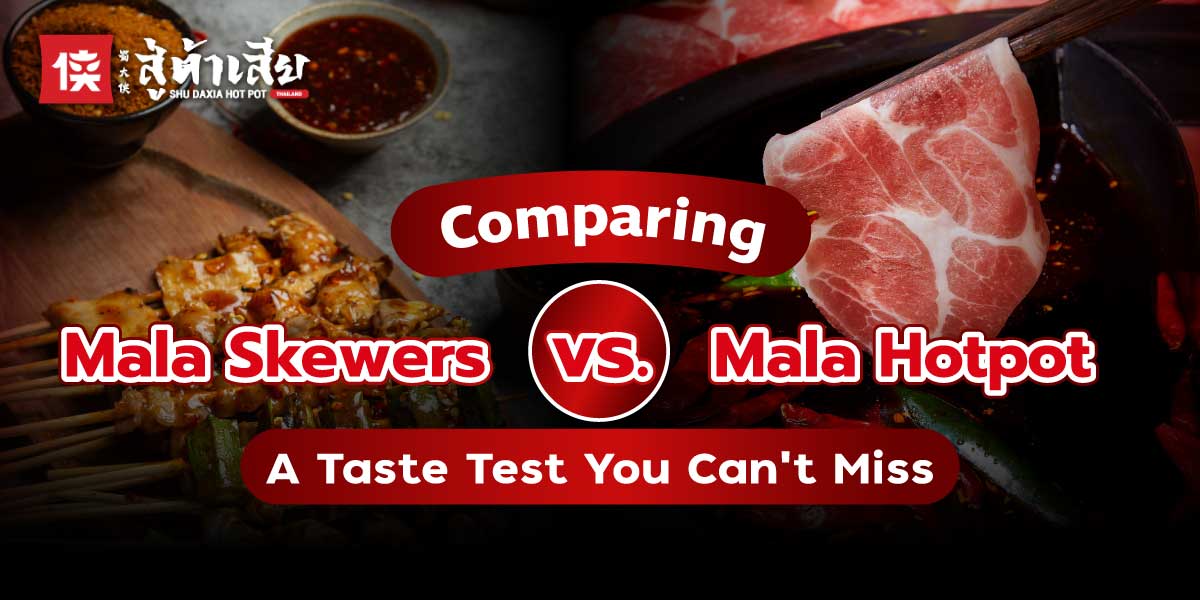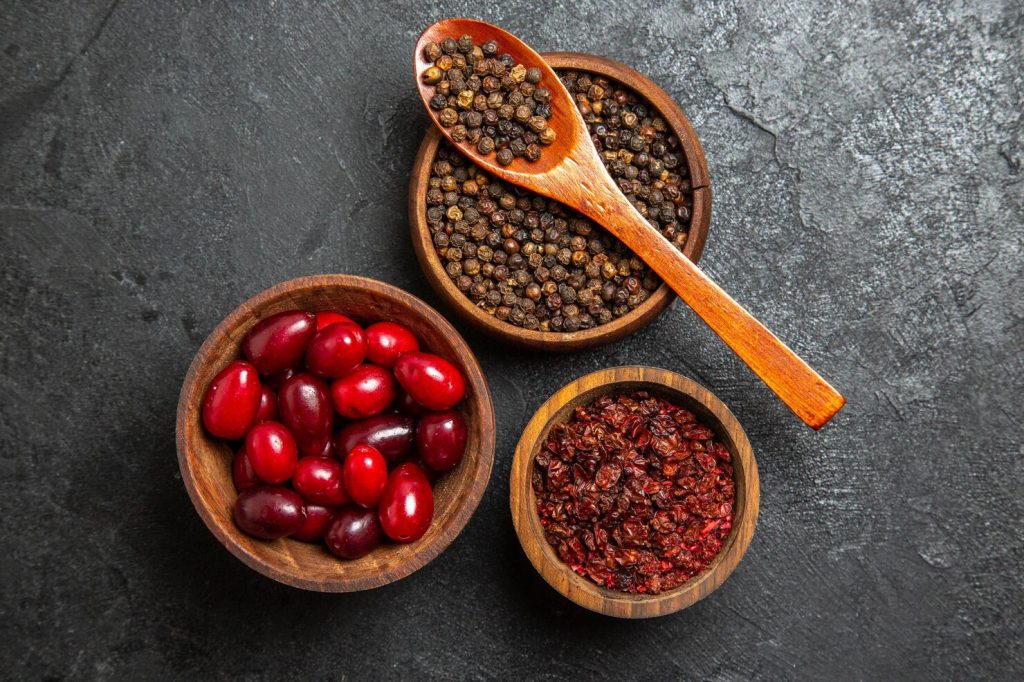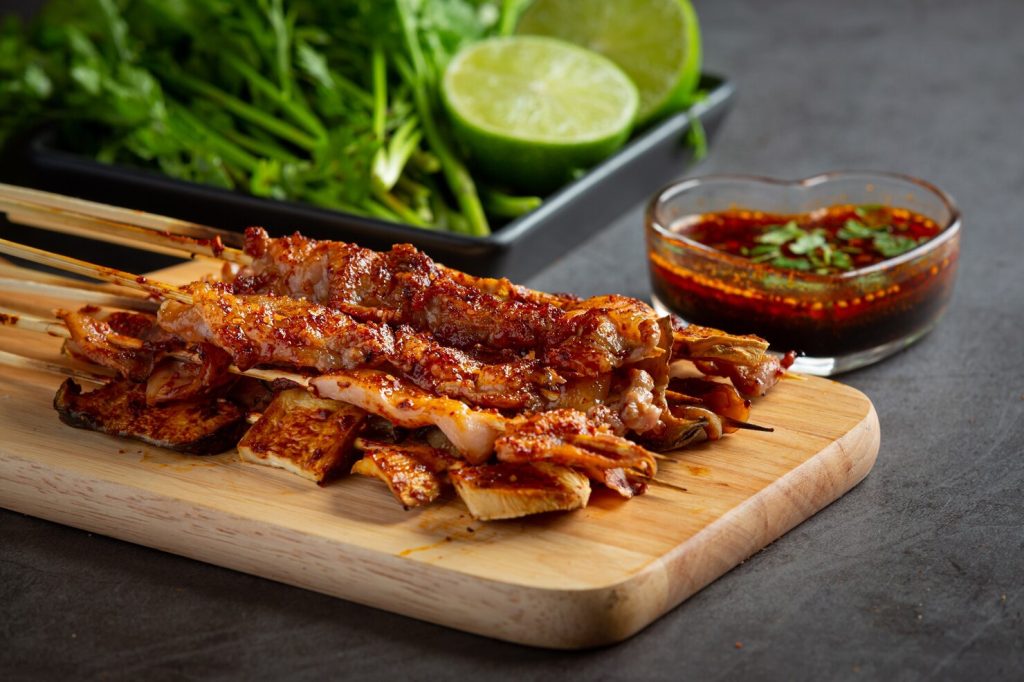
Comparing Mala Skewers vs. Mala Hotpot A Taste Test You Can’t Miss
It’s hard to believe anyone hasn’t heard of mala by now. This fiery, flavorful cuisine has gained immense popularity, offering a variety of dishes to suit any palate. From grilled mala skewers with their aromatic, smoky allure to the rich and spicy mala hotpot that seeps into every ingredient, mala has become a culinary sensation. This article delves into the differences and similarities between these two dishes, highlighting what makes each unique and worth trying.
Mala A Perfectly Spicy Symphony

Mala, derived from Sichuan cuisine, delivers a unique taste experience combining numbing heat from Sichuan peppercorns and fiery spice from chili peppers. This tantalizing balance, paired with the flavors of meats and vegetables, creates an unforgettable dish. Mala’s characteristic aroma, bold spiciness, and numbing sensation make it a favorite for spice enthusiasts.
It’s no wonder the “mala fever” continues to grow in Thailand, with numerous mala restaurants popping up nationwide. If you haven’t tried it yet, now’s the time—especially if you’re a fan of bold, spicy flavors. Once you do, mala is sure to earn a spot on your list of culinary favorites.
Mala Skewers vs. Mala Hotpot: Similar Yet Different

While both dishes share the iconic mala seasoning, their preparation, presentation, and dining experiences differ significantly. Here’s how:
Mala Skewers
Mala skewers are a dry dish featuring ingredients skewered on sticks, coated in mala spices, and grilled to perfection. The grilling process imparts a smoky, irresistible aroma unique to this dish. You can enjoy mala skewers as a snack or pair them with rice for a more filling meal.
Mala Hotpot
Mala hotpot, on the other hand, is a soup-based dish. The rich, spicy broth is prepared first, allowing the flavors to intensify. Ingredients are then added, absorbing the bold flavors of the soup. Mala hotpot has a more subtle aroma compared to skewers, but the broth’s richness makes it a standout choice for a hearty meal.
Ingredients: A Shared Foundation
Both dishes feature similar ingredients, typically including meats like pork, chicken, beef, or seafood such as fish, shrimp, and squid. Vegetables like napa cabbage, corn, and carrots are also staples. However, mala hotpot offers more variety, as noodles and other carb-based additions are often included, whereas skewers stick primarily to meats and vegetables.
For the Best Mala Hotpot Experience: Shu Daxia

If you’re seeking an authentic mala hotpot experience, Shu Daxia is the ultimate destination. This restaurant brings the essence of Chengdu, China, to life with premium ingredients, meticulous preparation, and outstanding service. The nostalgic ambiance, inspired by traditional Chinese culture, adds a unique charm to your dining experience.
Shu Daxia is a globally renowned mala hotpot brand, holding a Guinness World Record and boasting over 600 locations worldwide, including in China, the U.S., Japan, Australia, and Thailand. In Bangkok, you can find Shu Daxia at MBK Center, 6th floor. For more details, visit their website or contact them at 094-491-3900.
Conclusion
Both mala skewers and mala hotpot offer bold, spicy, and numbing flavors, but their preparation and serving styles set them apart. Mala skewers are a convenient, snackable option, while mala hotpot provides a more indulgent, meal-centric experience. With their unique and irresistible flavors, it’s no surprise that both dishes are beloved by Thai food lovers everywhere. Whether you’re in the mood for a quick bite or a leisurely feast, mala has something delicious to offer!

